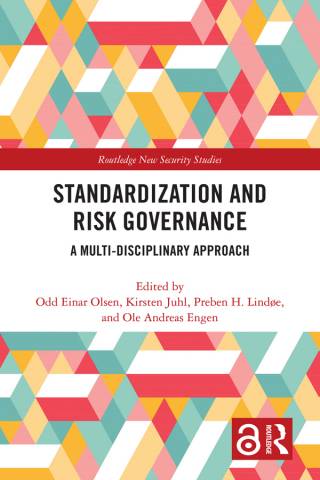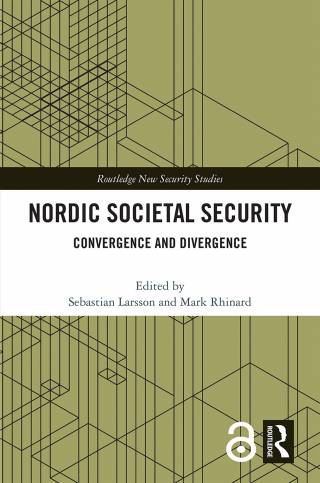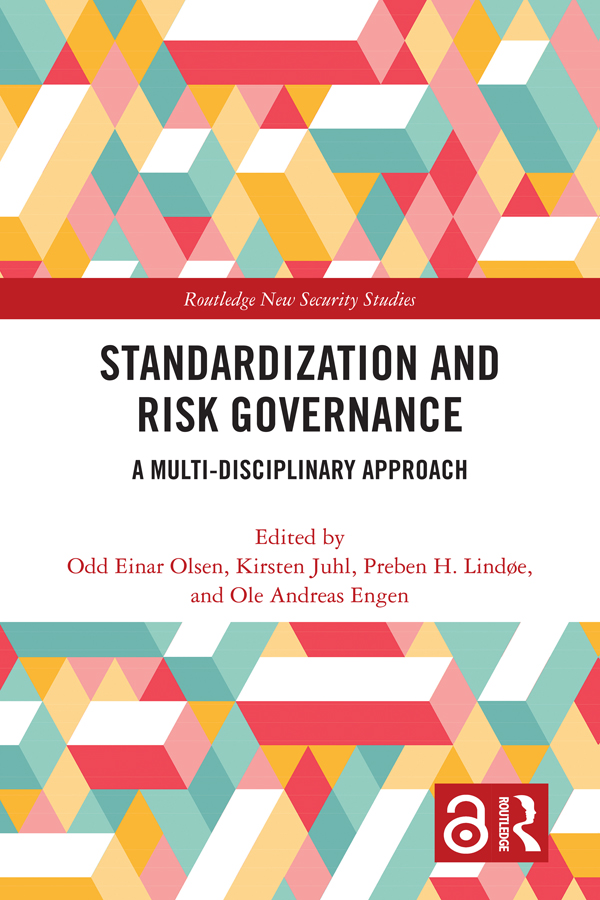Professor Sirpa Virta has written an article ”Pre-crime and standardization of security risks” as part of a volume Standardization and Risk Governance: A Multi-Disciplinary Approach (Routledge: 2019), edited by Odd Einar Olsen et al.
University instructor Tapio Juntunen has written (together with Ari-Elmeri Hyvönen, University of Jyväskylä) an article ”From ’spiritual defence’ to robust resilience in the Finnish comprehensive security model” as part of a volume Nordic Societal Security: Convergence and Divergence (Routledge: 2020), edited by Sebastian Larsson and Mark Rhinard.
Both of the publications presents a collection of state-of-the-art research on themes that are more than relevant also for the SAFER studies. Both of the edited volumes have been prepared as part of a multidisciplinary Nordic Societal Security research programme (NordSTEVA), funded by the NordForsk. In this sense the volumes also presents a unique Nordic perspective on issues related to safety management and risk governance as well as societal security strategies, discourses and practices within the region. Both books and all their contents are also open access!


Pre-crime and standardization of security risks by Sirpa Virta
Abstract
International and national pre-crime legislation on terrorism and violent extremism is a governing strategy, aiming to achieve standards and standardized practices on a wide array of security risks. Threats of terrorism and violent extremism are seen as serious security risks to the European Union and its populations. The prediction of future crime and the assessment of contemporary threats and the risks they pose are enduring challenges for the security community. Within the pre-crime frame, the standardization of security risks, for instance, terrorism prevention, operate through decision-making, norms, and legislation. Terrorism, radicalization, and violent extremism are seen not as incalculable unknowns and uncertain future crimes but as manageable security risks. However, it is argued that, due to the fundamentally political nature and the many contingencies of security, security risks cannot be standardized in the context of pre-crime and terrorism prevention.
Direct link to the article (open access): https://www.taylorfrancis.com/books/e/9780429290817/chapters/10.4324/9780429290817-11.
From “spiritual defence” to robust resilience in the Finnish comprehensive security model by Tapio Juntunen and Ari-Elmeri Hyvönen
Abstract
Resilience, understood as a combination of critical infrastructure protection, vital societal functions, and societal security, has become increasingly
central in the Finnish comprehensive security model, as indicated by various policy documents produced by different branches of the government. Previous research has interpreted the international turn to resilience as an indication of contemporary ideological trends, and analysed the features of resilience genealogically through its origins in the natural sciences. This chapter argues that the analysis of resilience-driven security strategies and technologies needs to pay more attention to the impact of local political history and (state) culture to the practical implementation of such strategies. In order to understand the substance and nuances of the emerging resilience doctrine in Finland, it is not sufficient to focus on international context and the emerging perception of the increasingly complex “threat environment”. A longitudinal perspective is required, which we provide by genealogically tracing a strong continuity between Finland’s Cold War conceptions of total/spiritual defence and the recent (re-)emergence of the calls to enhance societal resilience.
Direct link to the article (open access): https://www.taylorfrancis.com/books/e/9781003045533/chapters/10.4324/9781003045533-11.





